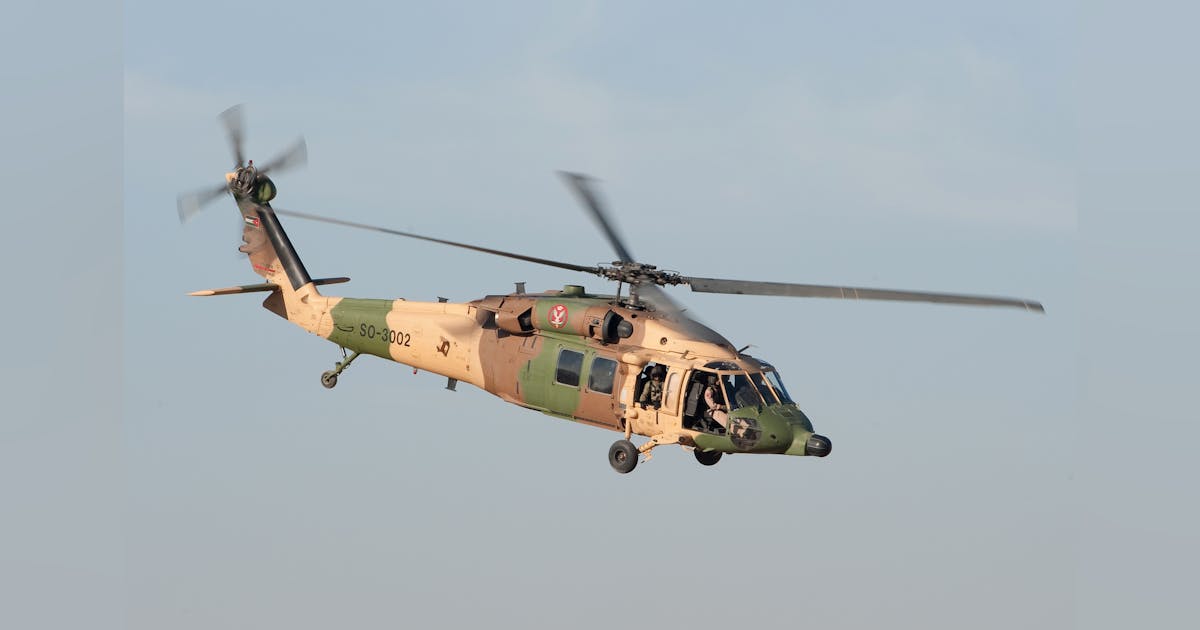The UH-60 Helicopter: Navigating Through Its Background, Layout, and Considerable Role in Aviation
The UH-60 helicopter, frequently referred to as the Black Hawk, stands as a testimony to the innovations in air travel technology and its undeniable effect on both civilian and armed forces operations. From its simple beginnings to its present status as a sign of reliability and versatility, the advancement of the UH-60 has been noted by continuous innovation and adjustment to satisfy the developing requirements of the aeronautics industry. As we dive into its background, layout intricacies, and the vital function it plays in various sectors, a deeper appreciation for this renowned helicopter arises, shedding light on the substantial contributions it has actually made to the world of aviation.
Development of the UH-60 Helicopter

The advancement of the UH-60 helicopter can be traced back to the demand for a versatile and reliable energy airplane that can fulfill the requiring needs of contemporary army operations. Developed by Sikorsky Aircraft, the UH-60 Black Hawk initially took flight in 1974, with the U.S. Army becoming its key driver. For many years, the UH-60 has undertaken numerous upgrades and versions to enhance its capabilities and efficiency.

Style Advancements and Features

Furthermore, the UH-60 features a sophisticated avionics collection that consists of innovative navigating systems, communication tools, and electronic screens. These technological advancements boost situational awareness for the staff, improving overall goal effectiveness and security. The helicopter's large cabin layout promotes easy and fast loading and unloading of troops, devices, and casualties, making it a functional property for army procedures and disaster alleviation efforts.
Furthermore, the unification of composite products in crucial architectural elements decreases weight while maintaining resilience, raising the UH-60's performance and gas effectiveness. The UH-60 helicopter's ingenious design components jointly add to its online reputation as a trusted and extremely capable airplane in both military and noncombatant aeronautics industries.
Armed Forces and Noncombatant Applications
With functional capacities fit for a series of functional requirements, the UH-60 helicopter offers both private and armed forces markets effectively (uh-60). In army applications, the UH-60, typically called the Black Hawk, plays a vital role in troop transportation, medical discharge, battle assistance, and search and rescue objectives. Its speed, capacity, and agility to run in numerous environments make it a beneficial property for armed forces operations worldwide. The UH-60's innovative avionics, protective systems, and flexibility have actually solidified its placement as a foundation of visit this web-site armed forces helicopter fleets.
In the noncombatant market, the UH-60 offers a multitude of purposes, including firefighting, police, emergency situation medical services, and corporate transport. Its dependability, maneuverability, and sizable cabin make it a popular choice for energy objectives. Additionally, the UH-60's versatility for VIP transport and overseas procedures additionally highlight its relevance in noncombatant applications. Whether in army or civilian usage, the UH-60 helicopter continues to confirm its worth as a versatile and vital aerial platform.
Effect on Aviation Procedures
Having actually established its value in army and civilian applications, the UH-60 helicopter's impact on aeronautics operations expands past its versatile abilities to affect a vast range of airborne goals. In army setups, the UH-60 plays a critical function in troop rescue, search and transportation operations, clinical emptying, and special operations support.
In noncombatant procedures, the UH-60 offers various vital features, such as firefighting, law enforcement assistance, catastrophe alleviation efforts, and aerial studies. uh-60. Its adaptability enables fast reactions to emergency situations and natural calamities, aiding in saving lives and shielding areas. Additionally, the UH-60's dependability and endurance make it a recommended selection for utility objectives, including transport of cargo and personnel to remote locations. In general, the UH-60 helicopter considerably impacts aviation operations by providing unparalleled abilities and assistance across a broad spectrum of objectives.
Future Dopes and Leads
The evolution of the UH-60 helicopter is poised to change aviation abilities and reshape functional standards in the coming years. Improvements in innovation and design are driving the advancement of next-generation UH-60 versions that assure raised speed, dexterity, and objective flexibility. One key location of focus for future UH-60 versions is improving independent abilities to boost functional effectiveness and dig this safety. By including innovative independent flight systems, the UH-60 can decrease pilot work, allow intricate missions in tough atmospheres, and boost overall mission performance.
Moreover, there is an expanding emphasis on sustainability and gas effectiveness in the design of future UH-60 helicopters (uh-60). Manufacturers are discovering new materials, propulsion systems, and wind resistant improvements to lower ecological impact and operating prices. These developments not just profit the environment but additionally add to the lasting stability and competition of the UH-60 in the swiftly developing aviation industry
Conclusion

The UH-60 helicopter, commonly referred to as the Black Hawk, stands official source as a testament to the developments in aeronautics innovation and its undeniable effect on both military and noncombatant procedures.Having actually established its value in noncombatant and army applications, the UH-60 helicopter's effect on aviation procedures expands beyond its versatile capabilities to affect a vast variety of aerial goals. On the whole, the UH-60 helicopter considerably influences aeronautics procedures by providing unrivaled capabilities and assistance throughout a wide spectrum of missions.
The evolution of the UH-60 helicopter is poised to reinvent aeronautics abilities and reshape functional paradigms in the coming years. As technology continues to advancement, the future growths and leads for the UH-60 helicopter stay promising, ensuring its continued relevance in the field of air travel.